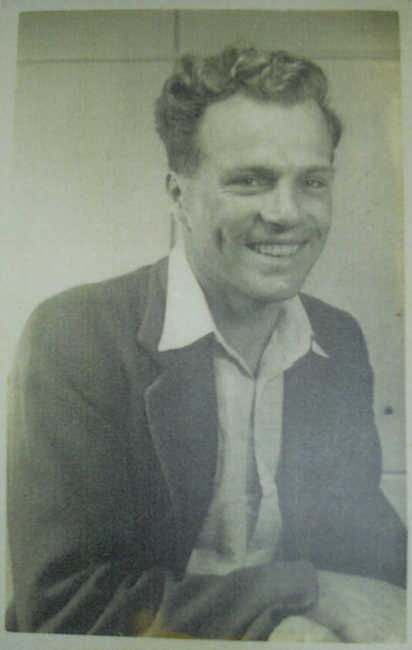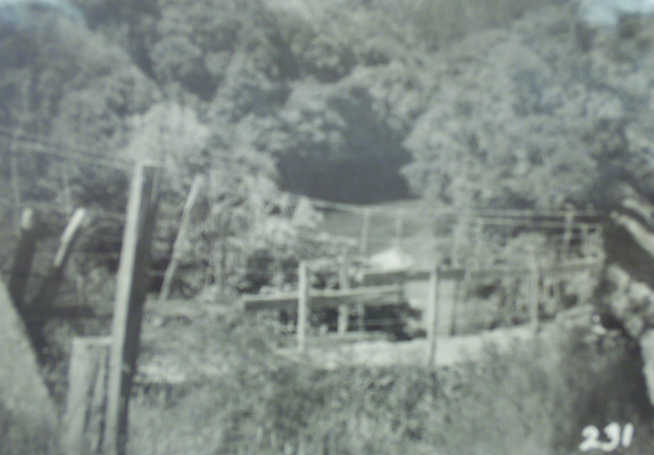Neil and Gae work to promote peace and justice Dorothy – 29/05/03
Serving the Labour Party after the election Once freed from campaigning Neil became more involved in other issues. After the election he felt he should give some time and effort to the Labour Party in return for all the valuable support during the election, so he got involved with the electorate committee.
GST an issue at the Labour Party Conference During this period there was a Labour Party Conference at which the introduction of GST was an issue. Neil, as is his wont, searched for information about the impact of a tax like GST on employment and the economy. Some research had been done at Massey University (at Palmerston North in the North Island) showing that countries that had this independent direct tax rather than income tax had higher employment rates. As a result when it came to the vote at the conference he voted for the introduction of GST. Some the delegates and MPs who were with Neil on the Peace and Social Justice committee were strongly opposed to GST and found it difficult to accept that Neil would vote according to the facts as he saw them rather than vote to support the views of others in the group.
Public Advisory Committee for Disarmament and Arms Control (PACDAC) Before Neil stood for Parliament he had for some time been the convenor of Scientists Against Nuclear Arms (SANA) in Canterbury. This was a parallel organisation to International Physicians for the Prevention of Nuclear War.
The connection was largely through Kate Dewes and the Riccarton Peace Group, but beyond that particularly through the Medical School scientists who were interested in the anti-nuclear issue.
PACDAC was set up under the Nuclear-free Act to be an advisory committee for the Government on disarmament, arms control, research and education. After the election, in the second term of the Labour Government, Neil was asked if he would fill the vacancy on that committee for a three year term. The work there included what Neil described as ‘a fascinating experience’ -having to administer the trust fund which the French had paid out after the sinking of the Rainbow Warrior. There were two funds – one environmental and one a peace fund administered by PACDAC and used to give money for research and education on peace and disarmament. This meant that PACDAC had applications from community groups for support from that fund. Also they had to advise the Minister of Defence and through that channel Parliament and the Government on matters related to the nuclear free issue and defence.
One of the major issues in which PACDAC was involved was the purchase of frigates. The committee asked to be briefed by the Ministry of Defence and the Ministry of Foreign Affairs about the frigates.
Neil takes up the account “There was the position that the frigates would be required to meet New Zealand’s special military requirements, so we were told that there was an open search around the world for the best frigates. That included gaining information about German, Danish, English, American and Australian frigates. We asked for the specifications that were being sought. That became known as ‘the missing frigate paper’ because it went from department to department, to cabinet, to the Minister of Defence and back to the departments but did not return to PACDAC for over six months. In the meantime we requested from the Australians what their specifications were. This paper arrived within weeks.”
“When finally Bob Tizard, Minister of Defence, released the New Zealand specifications it was amazing! One word had been changed to two words. When we put the specifications side by side on the Australian specification sheet they had simply taken ‘Australia’ out and put ‘New Zealand’. I was learning a lot about bureaucracy in politics.”
“It would seem that the New Zealand Government had decided to buy Australian frigates and therefore chose the Australian specifications for the New Zealand specifications which meant that nobody else could meet them. Bob Hawke and his staff were no doubt pressuring the New Zealand Government to do that and the Government responded. Because of the Closer Economics Relations (CER) with Australia there was great pressure to choose the Australian frigates and it was clearly a political decision. There were actually cheaper frigates available from Denmark and Germany, with more sophisticated weaponry and electronics, but it made sense to the Cabinet to improve the New Zealand economy because the Australians agreed that
some of the contracts would come to New Zealand companies, so the Government was trying to meet multiple objectives, not just defence, but also employment and financial objectives as well as stronger relations with Australia.”
In Neil’s view that decision actually had a strong influence on national security. He was promoting the view that national security was more about the security of New Zealand families – income and employment – than just about frigates and defence forces. That, he believes, was the thinking of the Government in ordering Australian frigates.
People like Neil and Kate Dewes who have professional training and experience and are outside the system, as community activists become involved with that system. They come to understand that there are establishment positions of not only the politicians but also the public servants in relationships with the community, with industry, with NGOs and international relationships – a huge network of which most New Zealanders are totally unaware. On one hand the activists find it frustrating because the perfect image of a democracy disappears, because vested interests are involved in lobbying Parliament. On the other hand understanding the Parliamentary and bureaucratic system means that they can serve the community better.
International Year of Peace 1986 Neil was a member of the National Committee from October 1985 to December 1986, and a member of the Canterbury Committee from January 1986 to January 1987.
Neil and Gae both working for peace Neil and Gae were very much involved in the peace movement, and Neil was able to attend their annual conferences. Kate Dewes and Neil were members of a committee in Christchurch and also of a committee set up in Wellington.
Kate Dewes summed up Neil’s peace work in the Peace Award citation.
Dr Neil James Cherry ONZM Neil Cherry has been a tireless worker for peace and disarmament research and education for many years. In 1985 he founded the Canterbury Branch of Scientists Against Nuclear Arms and convened the group until 1996. He was an active member of the US-based Union of Concerned Scientists and ‘Beyond War’, the Aotearoa/New Zealand Peace Foundation, Students and Teachers Educating for Peace and the Riccarton Peace Group. He was a member of the local committees of the 1986 United Nations International Year of Peace and served as the scientific member of the Public Advisory Committee on Disarmament and Arms Control from 1989-1991. He was awarded the 1990 Commemorative Medal by the government for services to peace and disarmament research and education. He has also published articles about the dangers of nuclear power and nuclear winter, and the need for nuclear disarmament.
Gae’s testing crisis One of the aspects of working for peace was the contact with interesting people. It was in this context of peace work that Gae and Neil met Sonja Davies. They greatly valued the friendship, but for Gae it was to lead to a most testing experience. On one occasion Sonja was to be the main speaker at a Bahai conference in Timaru for delegates from all over New Zealand. Gae and Neil were to go to Timaru for the weekend as Neil was one of the main speakers at the gathering.
Sonja came home ill on her return from overseas. Shortly before the conference she rang Neil and said that she was unable to fill her engagement to speak at the conference. She asked if somebody else would stand in for her and do her speech. Expecting that the script of the address would be sent to her Gae agreed. Some hours later they found that Sonja was going to speak off the cuff and there was no speech. Gae was truly appalled. She asked Kate Dewes if she could do it, but she had other commitments. She provided a speech from which she could use extracts. Unfortunately they were not suitable.
Gae tried to put together a speech, but could not eat or sleep, haunted by the fact that a lot of people were attending the conference largely because Sonja was going to speak at it. She ultimately decided that the only way she could do it was to approach it in her own way which was through audience involvement. At that time she was involved in Christian feminism, and reading a book about the significance and power of myths which when internalised affected our way of life. She decided to tell the story of Adam and Eve – one of the stories in the book – and centre it around a family peace context. Then she asked them to finish the myth differently with a more appropriate mythological ending – a more powerful conclusion particularly for women.
Gae was intensely nervous about it. She had not eaten or slept. About an hour before the session began she discovered that there was to be a Maori powhiri and that Gae as Sonja’s replacement was to be the recipient in the ceremony, observing all the right protocol. She knew nothing about what she was expected to do.
It all went off smoothly and so many people congratulated Gae on being so brave as to take over from Sonja. Gae’s thought was that she was not brave, just stupid! Much later Gae met Sonja again and said to her, “Do you realise that you were responsible for some of the worst moments in my life?” For Sonja it was just another speech and she had no idea of how terrible it had been for Gae.
For more information about Neil Cherry’s scientific research go to his website www.neilcherry.com
Return to the index of Neil Cherry’s life story.




